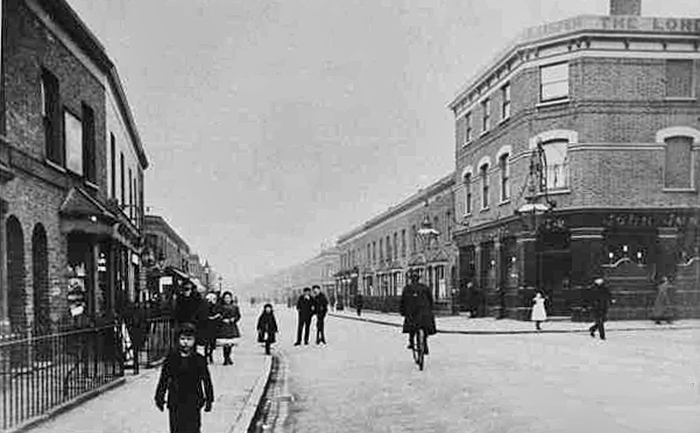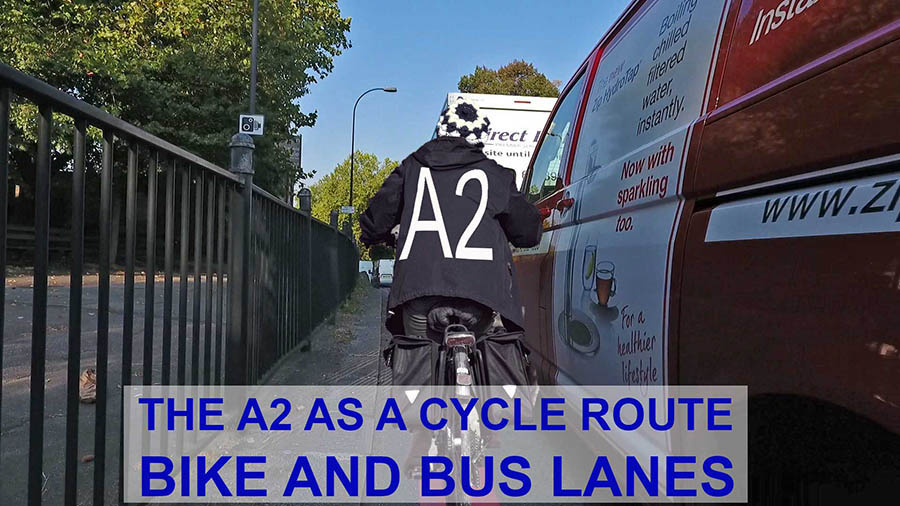The A2 from Blackheath to the Elephant & Castle as a cycle route with a Bus and Bike lane
If you would like to do an assessment of the A2 as a cycle route, please retain your impartiality by doing the assessment before reading the post or watching the video. List of 18 London cycling posts and videos.
[yasr_visitor_multiset setid=0]

Etymologically, a road is a place to ride and this is how the ‘A2’ was travelled for most of its history. It was a Celtic road in ancient times, possibly reinforced with branches in wet places. The Romans upgraded the road for use by soldiers, horses and wagons. It became known as Watling Street and was used by horse riders for two millennia.
Today, the A2 is a ghastly place to ride a bike but is still popular with people who ‘ride’ busses. Too many people use it to drive private cars. London can’t do without commercial vehicles but commuter traffic and traffic passing through London should be discouraged.
In 2002 a large crater appeared in the A2 and led to it being closed for six months while reconstruction took place. The crater was caused by chalk mining in the eighteenth and nineteenth centuries. When the road reopened, it was very disappointing to see that TfL had done nothing for cyclists – despite there being a spare lane on the north side and an extra-wide footpath on the south side. A short two-lane section does motorists no good on a predominantly single-lane road, which the A2 is. If anything, it causes turbulence.
The A2 used to be my preferred cycle route from Blackheath into London. It was and is the shortest and fastest route. But I gave up using it when I got late-onset asthma. Diesel fumes may have caused the asthma and they certainly trigger asthma attacks. In the autumn of 2016, my asthma having pretty well cleared up, I decided to have another go at riding on the A2. It didn’t seem as bad I remembered. But the weather was good and it was not a busy time of day. The biggest change to my old route is the bus lane. It starts at New Cross and goes most of the way into London. Generally cyclists prefer riding in bus lanes to sharing road space with other motor vehicles. But they shouldn’t be called bus lanes and they shouldn’t be designed for busses only. They should be BUS AND BIKE lanes, with better designs:
- Where road space is available, a lane width of four and a half meters lets cyclists overtake buses and vice versa
- Where spare footpath space is available, short cycle lanes can let buses overtake cyclists
- When pull-in bus stops are built, they should include space for cyclists to keep going without having to swerve into main traffic lanes
On the A2, there are fewer cyclist-bus conflicts than one might think. As the video shows, I passed a group of busses near New Cross Bus Garage but passed few busses taking passengers into London. Outside the morning and evening rush hours there are comparatively few passengers in the busses. If however, you get stuck behind a bus, the diesel-fumed air is a serious health hazard. And if a bus overtakes you in a 3.2m bus lane it’s no fun at all.

